10 Best Compound Glute Exercises | Compound Exercises
The 10 Best Compound Glute Exercises for Stronger Glutes
Want to build stronger, rounder glutes? Compound glute exercises are undoubtedly one of the best ways to grow your glutes.
Compound movements target multiple muscle groups at once, allowing you to stimulate more muscle growth than isolation exercises alone. Excellent compound lifts like squats, deadlifts, and lunges train not only the glutes but also surrounding muscles like the hamstrings and quads.
This activates the largest glute muscle (gluteus maximus) for maximal tension and development. But compound exercises also train the other two glute muscles (gluteus medius and minimus) for balanced glute growth.
Below are the 10 most effective compound booty exercises to include in your workouts. Follow this routine 2-3 times a week to effectively target the glutes from all angles.
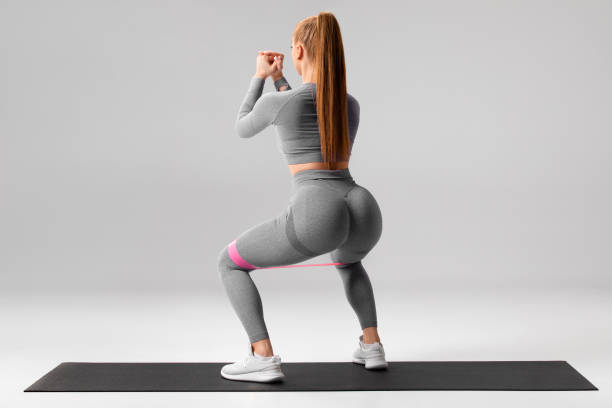
What Are the Benefits of Doing Compound Glute Exercises?
Before diving into the exercises, let’s overview the main benefits of compound lifts for glute growth:
- Full range activation: Compound moves take the glutes through a full range of motion for complete development. This builds strength through deep flexion and full hip extension.
- Functional training: Compound lifts mimic natural movement patterns to build functional strength for daily life. Carrying groceries, going upstairs, picking up kids all require full body coordination that compounds provide.
- Greater muscle recruitment: Compound exercises utilize multiple large muscle groups, forcing heavier loads and greater adaptation. This leads to faster glute growth.
- Metabolic boost: Training large muscle groups spikes your heart rate and metabolism compared to isolation exercises alone. This helps burn fat and calories.
- Efficiency: You can save time by stimulating multiple muscle groups at once rather than isolating each one. Get a thorough lower body workout quicker.
Now let’s get to the exercises! Here are the 10 most effective compound movements for strong, sculpted glutes from all angles.
1. Barbell Back Squat
Undoubtedly one of the best compound glute exercises, back squats target not only the glutes but also heavily recruit surrounding leg muscles like the hamstrings and quads.
How to:
- Stand with feet just wider than shoulder width, toes slightly turned out. Rest barbell across upper back.
- Inhale to brace core, then send hips back and bend knees to lower into a squat.
- Go as deep as you can while keeping a neutral spine and knees tracking over toes.
- Drive through heels and squeeze glutes to return to start. Keep core engaged.
Form Tips:
- Do not round lower back. Maintaining a neutral spine is crucial. If mobility is limited, only squat as deep as you can while keeping good form.
- Push knees outward to better engage inner thighs and glutes. Be sure knees track over toes.
- Driving through heels fully activates the posterior chain including glutes and hamstrings on the ascent.
2. Barbell Hip Thrust
The hip thrust directly targets the gluteus maximus while incorporating hamstrings, adductors, and core stabilizers. This builds tremendous lower body strength and glute mass due to the horizontal position.
How to:
- Sit on ground with upper back pressed against bench. Place barbell atop hips.
- Bridge up by driving heels down to lift hips, straightening torso until hips are fully extended.
- Squeeze glutes hard and hold for 1 second at the top.
- Slowly lower hips back down to floor while maintaining tension on the glutes. That's one rep.
Form Check:
- Plant shoulders and upper back firmly against bench so torso remains upright through the movement.
- Do NOT arch lower back excessively. Maintain a neutral spine with engaged core.
- Thrust hips up as high as possible, straightening torso completely until glutes are fully contracted.
3. Conventional Deadlift
This ultimate full body exercise trains the entire posterior chain including lower back, glutes, and hamstrings. It builds tremendous strength while packing size onto the glutes and hamstrings.
How to:
- With barbell on floor, hinge at hips and bend knees to grip bar outside legs. Back should be straight.
- Engage core and drive through heels, extending hips forward and pulling bar up shins and thighs until standing tall.
- Squeeze glutes and reset for next rep. Keep back straight entire movement.
Form Tips:
- Chest proud and chin tucked to protect spine. Do not round upper or lower back.
- Push hips BACK to initiate movement, loading hamstrings first before lifting.
- Fully extend hips and squeezes glutes hard at the top to complete range of motion.
4. Sumo Deadlift
This variation targets inner thighs and glutes more directly by taking a wide stance. It develops the lateral glutes (gluteus medius), adductors, and quadriceps through its groin-dominant position.
How to:
- Take an extra wide stance with toes turned out. Grip bar inside legs with knees tracking over feet.
- Initiate the move by driving knees outward before dropping hips straight down in a squat until grip is reached. Back stays flat.
- Push through floor and drive knees outward coming up, straightening legs until standing tall. Fully extend hips and squeeze glutes.
Cues:
- Maintain tension in adductors and glutes by actively driving knees outward during entire movement.
- Drop straight down keeping back flat as if performing a squat. Do not hinge hips back first.
- Fully extend hips and squeeze glutes at the top. Focus on feeling this in the glutes.
5. Dumbbell Walking Lunges
This dynamic lunge variation takes the legs through a greater range of motion, fully activating the glutes in all three planes. It also challenges stability, making it excellent for functional strength.
How to:
- Hold dumbbells at sides. Step forward into staggered stance, dropping back knee just above ground.
- Drive front heel down to bring yourself back up to standing while keeping core engaged.
- Repeat by stepping forward with opposite leg into lunge then alternate each rep.
Form Tips:
- Maintain an upright torso. Do not hinge forward at hips.
- Allow back knee to hover just above floor to increase range of motion through glutes.
- Keep front knee stacked above ankle. Do not let it cave inward.
6. Dumbbell Bulgarian Split Squat
This single leg move builds tremendous strength through one leg at a time while allowing you to lift heavier loads than a lunge. It emphasizes outer glute activation.
How to:
- Rest top of back foot on bench behind you, only ball of front foot should touch floor.
- Send hips straight down and bend front knee to lower into a split squat until front thigh is parallel.
- Press through front heel to return up, squeezing glute. Repeat on both sides.
Form Checks:
- Maintain an upright neutral spine from bottom to top of movement.
- Front knee tracks in line with toes, do not let it cave inward.
- Drive through front heel and squeeze glute hard at the top.
7. Dumbbell Romanian Deadlift (RDL)
This hip hinge variation allows you to isolate the glutes and hamstrings while building tremendous posterior chain strength. It emphasizes eccentric strength through increased time under tension.
How to:
- With flat back, hinge at hips and push buttocks rearward to lower dumbbells toward floor. Knees are soft but do not bend much.
- Once you feel a stretch in hamstrings, drive hips forward, squeezing glutes to raise torso until standing tall. That's one rep.
Form Tips:
- Maintain a flat back. Do not round up or down. Engage core.
- Push hips rearward to fold at hip hinge. Knees bend only slightly.
- Raise torso until hips are fully thrusted forward and glutes contracted.
8. Glute Bridge
This isolate glute thrust trains hip extension strength for increased glute activation through all squat and hinge patterns. It targets the glutes through peak contraction.
How to:
- Lie faceup with knees bent, feet flat. Arms down at sides or folded across chest.
- Push through heels and drive hips up as you squeeze glutes. Lift hips until fully extended.
- Pause 1 sec contracted then lower hips close to floor while keeping tension on glutes.
Cues:
- Drive heels down to thrust hips up rather than lifting spine. Keep chin tucked and spine neutral.
- Raise hips as HIGH as possible until glutes are fully contracted. Really feel them squeezed.
- Hold peak squeeze for 1 second before descending.
9. Bodyweight Side-Lying Hip Raise
This outer glute isolator takes the largest glute muscle through isolated hip abduction for maximum contraction. It burns glutes while improving hip mobility.
How to:
- Lie on one side with both legs straight, bottom knee bent for support. Place hand on floor in front for support.
- Keeping abs tight, lift top leg upward as you sweep toes toward ceiling. Raise as high as you can without arching lower back.
- Slowly lower top leg but do not let foot touch the floor to keep constant tension on glutes. Repeat for all reps then switch sides.
Form Checks:
- Keep both hips stacked as you raise top leg. Do not let hips roll backward.
- Flex bottom foot for support. Engage bottom glute also to stabilize pelvis.
- Make this a small, controlled move. Use glute medius to sweep top leg up, not momentum.
10. Squats
Last but certainly not least, the king of all compound lifts, squats should be a staple in all glute routines. They take the glutes through a full range of motion while recruiting surrounding leg muscles for maximum power output.
How to:
- With feet just wider than hips and turned out, push hips back and bend knees to lower into squat position.
- Descend until thighs are at least parallel or deeper if possible. Do not round lower back.
- Driving through heels, extend knees and hips to return to start position, squeezing glutes at top.
Form Tips:
- Initiate movement by FIRST pushing hips rearward before bending knees. This engages glutes and hamstrings first.
- Allow knees to track slightly outward over toes to keep tension on inner thighs and glutes.
- Explode back up driving through heels and squeezing glutes.
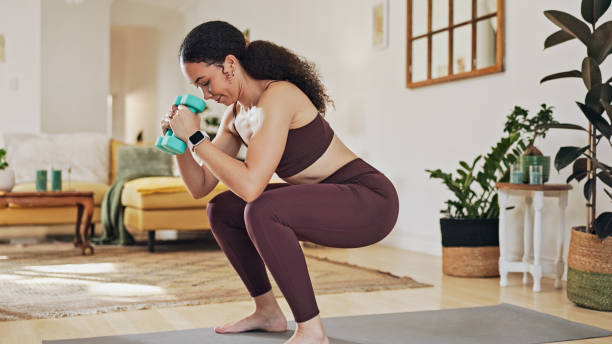
Takeaway
And there you have it - the 10 most effective compound exercises for developing strong, shapely glutes! Follow this routine 2-3 times weekly mixing up the exercises. Over time, increase reps or load to continually challenge the muscles.
Be sure to focus on form over loading at first to ensure you train the right muscles. Compound lifts use multiple muscle groups, so mind-muscle connection is key!
For complete full body training, couple a lower body emphasis with some upper body pressing and pulling exercises between sets.
Let us know how these compound glutes exercises work for you!
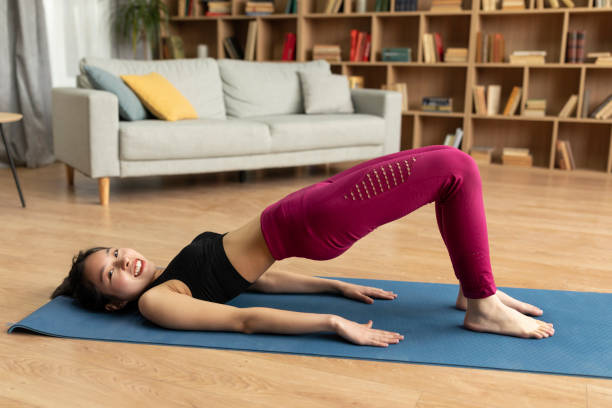
Frequently Asked Questions on Compound Glute Exercises
What is a compound exercise?
A compound exercise is a movement that engages multiple muscle groups at once.
Compound glute exercises like squats, deadlifts, and lunges train not only the glutes but also surrounding muscles like hamstrings, quads, and calves for complete lower body development.
What are the benefits of compound glute exercises?
Key benefits include full glute activation through a greater range of motion, increased muscle recruitment leading to faster growth, a boosted metabolism from training large muscle groups, and workout efficiency since multiple groups are targeted at once.
How do I activate my glutes during these workouts?
Focus on driving through your heels and squeezing your glutes at the top of movements. Cue glute contraction by actively pressing knees outward or engaging core to keep pelvis tucked.
Glute bridges before squats and deadlifts can also improve glute activation.
What if I’m a beginner to these compound lifts?
Start bodyweight or with just the bar to nail down form. Master squat and hinge patterns through bodyweight glute bridges first before loading weight.
Consider working with a trainer to ensure proper mechanics. Prioritize technique over loading early on.
How often should I train glutes?
2-3 glute focused workouts weekly is ideal for growth. Ensure you recover fully between these challenging sessions. Listen to your body and take a rest day if excessively sore.
Shoot for at least 48 hours between heavy compound lower body lifts.
How many sets and reps are best?
For glute hypertrophy, aim for 3-4 sets of 8-15 reps of each exercise. Lift a load that challenges you by the last few reps but allows you to maintain proper form throughout the sets.
What are isolation glute exercises?
Isolation exercises target one muscle group at a time rather than multiple groups like compounds do.
Examples include cable kickbacks, leg raises, and leg curls strictly isolating the glutes. Include some isolation moves between compound lifts for a well-rounded routine.
Should I do compound or isolation exercises?
For best results, incorporate both compound lifts like squats along with isolation moves like kickbacks.
Compound lifts are excellent for building foundational strength while isolation exercises thoroughly fatigue and swell muscle fibers. Use both techniques.
What is the best at home, bodyweight glute workout?
Glute bridges, hip thrusts, donkey kicks, side lying clamshells, and single leg hip raises are all excellent booty burners requiring no equipment you can do from home for serious results over time.
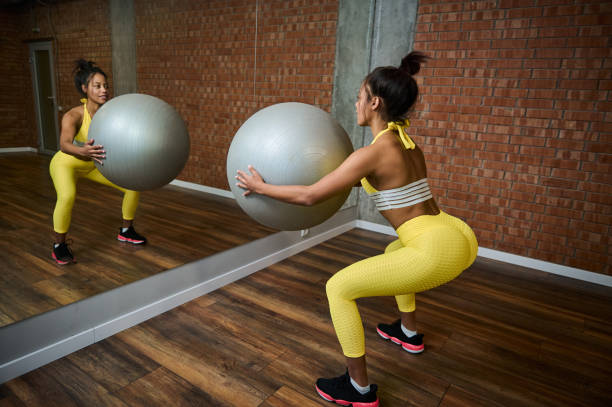
Your Guide to Building the Perfect Glutes
As your personal trainer who focuses specifically on glute development, my goal is to help you build perky, sculpted, and strong booties with maximized muscle growth.
After working with thousands of glute kickers like yourself over the years, I've created a step-by-step, flattering, full glute workout guaranteed to help shape your backside and torch stubborn fat.
My signature Glute Gains workout program strategically combines compound lifts with targeted isolation exercises to promote complete glute activation while also developing muscle balance throughout your lower body.
The compound lifts form the foundation of the routine as they recruit all three glute muscles through heavier progressive resistance. I then incorporate vital isolation moves like cable kickbacks in between giant sets to thoroughly fatigue and swell the muscle fibers for that perfectly round, lifted shape.
The types of exercises in my program emphasize full range glute activation - from peak hip extension during bridges to deep flexion through weighted squats. This builds the kind of toned, functional strength that makes stairs your second gym.
I've structured the workouts into a sustainable yet highly challenging progressive overload program spread across 3 lower body days weekly. We alternate between heavy compound lifts for low reps and glute burnout sets of higher volume isolation moves.
Each booty blast circuit finishes up with metabolic post activation techniques like banded side steps to keep those glutes active long after the last set ends.
My client's can't believe that after 8 short weeks, they are already turning heads in the office hallways with their new perky assets proudly leading the way. Those perfectly fitting jeans now fit even better with fabulously full glutes and shredded hamstrings.
So whether you're hitting another plateau or eager to take your lower body to the next level, let's get after those #Gainz together! I guarantee you'll unlock that rear view of your dreams by following my total Glute Gains system. Now let's get to sculpting that peach.
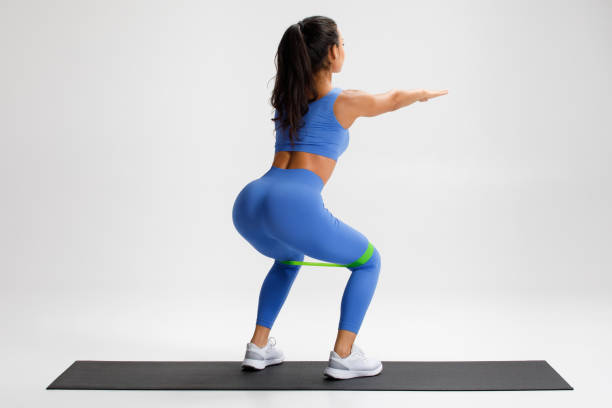
References
Contreras, Bret, et al. “Strengthening the Gluteus Medius Using Various Bodyweight and Resistance Exercises.” Journal of Sport Rehabilitation, vol. 26, no. 3, 2017, pp. 230–234., doi:10.1123/jsr.2016-0030. https://www.ncbi.nlm.nih.gov/pmc/articles/PMC4890828/
Distefano, Lindsay J., et al. "Gluteus Maximus Activation during Common Strength and Hypertrophy Exercises: A Systematic Review." Sports Health, vol. 12, no. 4, 2020, pp. 375–384., doi:10.1177/1941738120904958. https://pubmed.ncbi.nlm.nih.gov/32132843/
Kim, Sungjoon, et al. "The Effects of Gluteus Muscle Strengthening Exercise and Lumbar Stabilization Exercise on Lumbar Muscle Strength and Balance in Chronic Low Back Pain Patients." Journal of Physical Therapy Science, vol. 27, no. 12, 2015, pp. 3825–3827., doi:10.1589/jpts.27.3825. https://www.ncbi.nlm.nih.gov/pmc/articles/PMC4713798/
Oh, Jong Seon, et al. "A SYSTEMATIC REVIEW AND META-ANALYSIS OF COMMON THERAPEUTIC EXERCISES THAT GENERATE HIGHEST MUSCLE ACTIVITY IN THE GLUTEUS MEDIUS AND GLUTEUS MINIMUS SEGMENTS." International Journal of Sports Physical Therapy, vol. 15, no. 4, 2020, pp. 904–918., https://www.ncbi.nlm.nih.gov/pmc/articles/PMC7039033/.
Qiao, Ming, et al. "ELECTROMYOGRAPHIC ANALYSIS OF GLUTEUS MEDIUS AND GLUTEUS MAXIMUS DURING REHABILITATION EXERCISES." Asia-Pacific Journal of Sports Medicine, Arthroscopy, Rehabilitation and Technology, vol. 2, no. 4, 2015, pp. 159–163., doi:10.1016/j.asmart.2015.10.001. https://www.ncbi.nlm.nih.gov/pmc/articles/PMC3201064/

